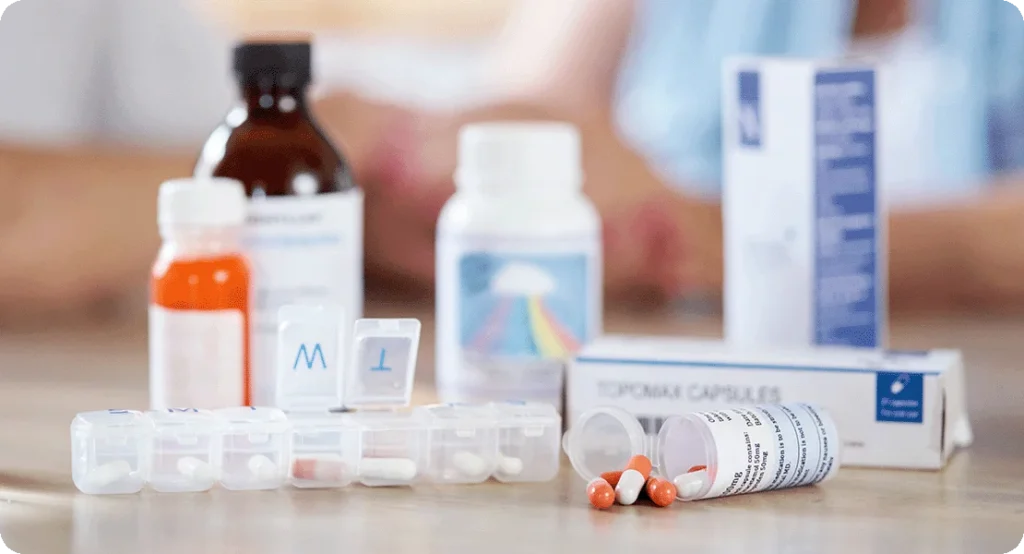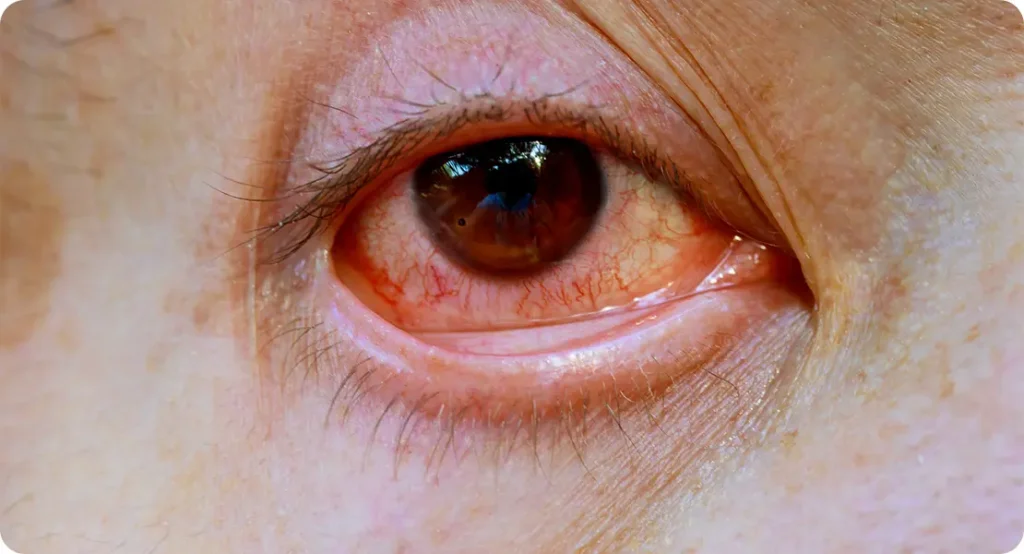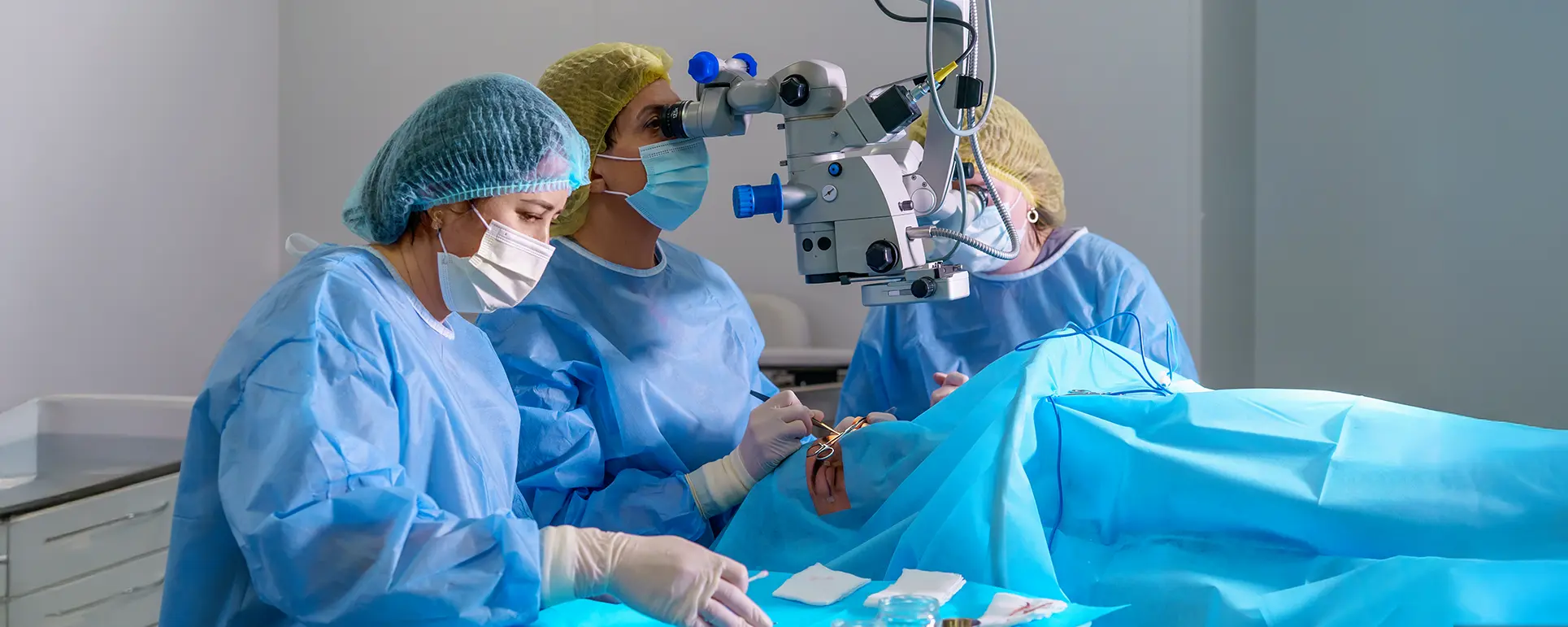If you’ve been diagnosed with herpes simplex keratitis (HSK) and now need cataract surgery, you may understandably have concerns. Cataract surgery is one of the most common procedures performed worldwide, but things become a bit more complex when the eye has a history of herpes simplex virus (HSV) infection. The main issue? The risk of viral reactivation following surgery — and what that might mean for your recovery and long-term vision.
So, let’s talk through what you actually need to know: how surgeons prepare, how antiviral treatment plays a role, what surgical choices are made differently, and how your corneal health impacts things like intraocular lens (IOL) selection and wound healing.
Understanding the Herpes Simplex Virus and Its Ocular Impact
First, a bit of background. Herpes simplex virus type 1 (HSV-1), the same virus responsible for cold sores, can also infect the eye. When it does, it typically involves the cornea — the clear front part of your eye — and leads to a condition known as herpes simplex keratitis. This condition can range from superficial epithelial keratitis to deeper stromal disease and even lead to long-term scarring or thinning of the cornea.
The real challenge with HSV is its lifelong latency. After the first infection, the virus lies dormant in the trigeminal ganglion and can reactivate later due to triggers like stress, trauma, or immune suppression — all of which can happen around surgery. In fact, any eye surgery, especially cataract extraction, is a known potential trigger for HSV reactivation. That’s why careful planning is essential.
Surgeons managing cataract patients with a history of HSK must balance the benefits of restoring vision against the possibility of sparking a fresh episode of keratitis. But thankfully, with thoughtful timing and preparation, outcomes can be very positive.
Antiviral Prophylaxis: A Crucial Part of Planning

One of the most effective ways to reduce the risk of herpes reactivation after surgery is the use of prophylactic antiviral therapy. This might include oral medications like aciclovir or valaciclovir — drugs that suppress HSV replication and reduce the likelihood of flare-ups.
In most cases, surgeons will start antiviral treatment at least a few days before surgery and continue it for several weeks afterward. The exact duration may vary depending on your history. For instance, if you’ve had multiple recurrences or stromal disease in the past, the treatment may be extended for a few months.
There’s good evidence supporting this approach. Studies have shown that patients with a history of HSK who receive antiviral prophylaxis have a significantly lower risk of postoperative HSV reactivation. It’s a simple but powerful tool — and for many patients, it’s the difference between a smooth recovery and an unwanted viral episode.
Your ophthalmologist will usually coordinate closely with your corneal specialist to tailor the antiviral regimen to your history. And if you’ve already been taking antivirals long-term, they may adjust the dose for the perioperative period.
Timing the Surgery: Waiting for Quiescence
Another major consideration is timing. Cataract surgery should not be performed during an active episode of HSK — that part’s obvious. But even when you’re symptom-free, surgeons are cautious. Most will want to wait at least 6 months after the last episode of keratitis before going ahead.
This period of “quiescence” gives the eye time to recover, stabilises the cornea, and reduces the risk that any surgical manipulation will trigger a recurrence. It also allows for better preoperative measurements of the eye — especially if the cornea was previously inflamed or scarred.
In some cases, surgeons might request additional corneal imaging, such as anterior segment OCT or topography, to assess the structural integrity of your cornea. If the eye has residual scarring or irregularity, this can also influence the lens choice — something we’ll cover shortly.
Intraoperative Risks: Corneal Fragility and Inflammation
Eyes with a history of HSK are often more fragile. The corneal epithelium — that outermost layer — may not adhere as well, especially if you’ve had repeated episodes of epithelial keratitis or prior treatment with topical antivirals or steroids. This means your surgeon will need to take extra care during surgery to avoid damaging this delicate layer.
There’s also a higher risk of postoperative inflammation. Even with the best surgical technique, any operation on the eye triggers an immune response — and that can, in turn, increase the risk of HSV reactivation. This is why some patients may receive topical steroids after surgery, often carefully balanced with antiviral therapy.
In short, your surgical team must walk a careful line: reducing inflammation to protect the eye without weakening the immune defences too much.
Lens Selection: Tailoring the IOL to Your Ocular History
Choosing the right intraocular lens (IOL) is a critical decision in any cataract surgery. But in patients with HSK, it takes on additional importance. The key issue is corneal clarity and regularity. If the cornea is scarred, irregular, or thinned, this can affect the way light is focused — and that might influence what type of IOL is best for you.
For example, if your cornea has residual irregular astigmatism from old herpes scars, your surgeon may avoid toric lenses (which correct astigmatism) unless the measurements are highly reliable. In some cases, multifocal lenses — which require a clear, regular cornea to perform well — may not be recommended.
Instead, surgeons often opt for monofocal lenses, which provide reliable vision and have fewer side effects in eyes with unpredictable optics. The goal is to give you the best possible functional vision while keeping things stable and safe.
It’s worth noting that IOL power calculation can also be more challenging in HSK patients. Previous episodes may have altered the corneal curvature, and dry eye (a common issue after HSK) can affect preoperative measurements. That’s why it’s crucial to manage the ocular surface optimally before taking these readings.
Managing Dry Eye and Ocular Surface Health

Even outside the context of herpes, dry eye is a common issue after cataract surgery. But in patients with HSK, the problem is often worse — both due to damage to the corneal nerves and from the effects of long-term medications. This isn’t just a comfort issue; dry eye can cause fluctuating vision, delayed healing, and even affect your final visual outcome.
That’s why many surgeons will start treating dry eye in advance. This might include preservative-free artificial tears, short courses of topical steroids or cyclosporine, or punctal plugs to help retain moisture.
Addressing dry eye aggressively before surgery isn’t just about feeling better — it’s about setting the stage for better healing, fewer complications, and more predictable visual results.
Postoperative Monitoring: Watching Closely for Signs of Recurrence
After surgery, the first few weeks are the most critical. You’ll be followed closely to watch for any signs of HSV reactivation. These might include new redness, light sensitivity, blurry vision, or pain. Often, your surgeon will schedule more frequent visits than usual in the early recovery period.
If there’s any suspicion of a flare-up, they may take a corneal swab or start empirical treatment while awaiting confirmation. The good news is that most reactivations — if caught early — respond well to intensified antiviral therapy and supportive care.
You may also be kept on antiviral medication for a few months after surgery, even if everything appears to be healing well. It’s a small step that offers an added layer of protection.
What About Recurrence Rates After Cataract Surgery?
Let’s talk numbers for a moment. The risk of herpes simplex keratitis reactivation after cataract surgery varies, but most studies suggest a recurrence rate of around 10–20% in those with a known history — significantly lower if antivirals are used appropriately.
This highlights just how important preoperative planning is. With the right combination of timing, prophylaxis, and ocular surface management, most patients go on to have excellent outcomes with restored vision and no serious complications.
The key is individualisation — tailoring the approach to your history and eye health.
Considerations for Patients with Stromal Involvement
Not all HSK is the same. Patients with epithelial disease may have more issues with corneal fragility and surface irregularity, while those with stromal keratitis — a deeper, immune-driven form — carry different risks.
Stromal disease often leaves long-term haze or scarring, and these patients are more likely to have had previous steroid use, which can thin the cornea. They’re also at slightly higher risk of postoperative inflammation or poor visual outcomes, especially if the corneal scarring is central.
In such cases, surgical planning might include additional imaging, potential referral to a corneal specialist, and realistic discussions about what level of vision is achievable.
FAQs
- Can I have cataract surgery if I’ve had herpes simplex keratitis before?
Yes, you absolutely can — but your surgery needs to be carefully planned. Doctors will usually wait until your eye has been free of flare-ups for several months and will likely put you on antiviral medication before and after the procedure to reduce the chance of reactivation. - Will herpes come back after cataract surgery?
It’s possible, but not inevitable. Cataract surgery can sometimes trigger herpes reactivation because of the stress it places on the eye. That’s why antiviral prophylaxis is so important — it significantly lowers the risk. - How long before surgery should I start antiviral medication?
Your surgeon will typically recommend starting oral antivirals like aciclovir or valaciclovir a few days before your operation. In some cases, particularly if you’ve had multiple recurrences, this may begin even earlier. - Do I need to continue antivirals after surgery too?
Yes, most patients are kept on antivirals for at least a few weeks after surgery — and sometimes longer, especially if you’ve had stromal keratitis in the past. This helps protect your eye during the healing period when it’s most vulnerable. - Can the surgery make my vision worse if herpes flares up again?
If a recurrence happens and isn’t caught early, yes, it can cause further corneal damage or scarring. But if it’s picked up quickly and treated, the risk of permanent vision loss is low. That’s why close follow-up is essential. - What type of lens is best if I’ve had HSK?
Monofocal lenses are often preferred because they’re more forgiving in eyes that have corneal irregularities or past scarring. Your surgeon will base the choice on the health of your cornea and the reliability of your pre-op measurements. - Will dry eye affect my cataract surgery recovery?
Yes — especially if your HSV affected the corneal nerves. Dry eyes can delay healing and make vision fluctuate. Managing the ocular surface with artificial tears or other treatments before and after surgery can make a real difference. - How soon can I return to normal activities after the operation?
In general, you can resume most activities within a few days — but your doctor might ask you to be extra cautious, especially with hygiene, to avoid introducing infection or triggering a flare-up during early healing. - Should I avoid steroid eye drops after surgery?
Not necessarily. Steroid drops are often used to control inflammation after cataract surgery. When given alongside antiviral medication, they’re usually safe, but your doctor will monitor closely for any signs of HSV reactivation. - What should I watch out for after the operation?
Watch for redness, pain, blurred vision, or light sensitivity — especially if these symptoms come on a few days after surgery. They could indicate a viral recurrence, and the earlier it’s treated, the better the outcome.
Final Thoughts
Having herpes simplex keratitis doesn’t mean you can’t have cataract surgery — far from it. But it does mean that your surgeon needs to plan things a little more carefully. With the right antiviral prophylaxis, thoughtful lens selection, and meticulous ocular surface management, the risks can be significantly reduced, and the benefits of surgery preserved.
At the London Cataract Centre, we’re well-versed in managing complex cataract surgery cases like this. If you’ve had HSV keratitis in the past and are now considering surgery, we’ll work closely with your corneal specialist to plan every detail safely. Your visual recovery matters, but so does avoiding a flare-up — and we’re here to help with both.
References
- Wilhelmus, K.R., 2010. Antiviral treatment and other therapeutic interventions for herpes simplex virus epithelial keratitis. Cochrane Database of Systematic Reviews, (12), CD002898. Available at: https://www.cochranelibrary.com/cdsr/doi/10.1002/14651858.CD002898.pub4/full [Accessed 23 June 2025].
- Yagci, A., Bozkurt, B., Egrilmez, S., Palamar, M. and Gurdal, C., 2012. Cataract surgery in patients with herpes simplex keratitis. Middle East African Journal of Ophthalmology, 19(2), pp.203–207. Available at: https://www.ncbi.nlm.nih.gov/pmc/articles/PMC3432366/ [Accessed 23 June 2025].
- American Academy of Ophthalmology, 2021. Herpes Simplex Virus Keratitis. EyeWiki. Available at: https://eyewiki.aao.org/Herpes_Simplex_Virus_Keratitis [Accessed 23 June 2025].
- Liesegang, T.J., 2001. Herpes simplex virus epidemiology and ocular importance. Cornea, 20(1), pp.1–13. Available at: https://journals.lww.com/corneajrnl/Fulltext/2001/01000/Herpes_Simplex_Virus_Epidemiology_and_Ocular.1.aspx [Accessed 23 June 2025].

